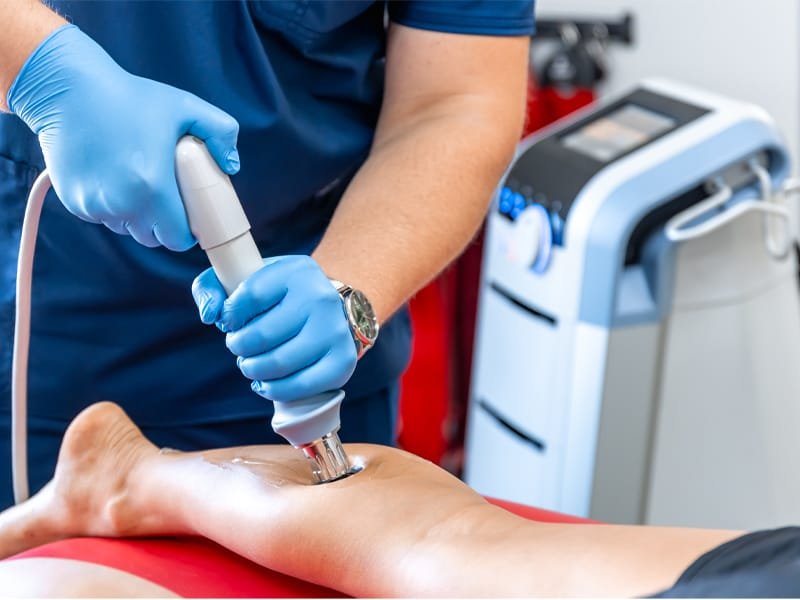Treatments
MG Physio takes great pride in the
quality of your care.
What Treatments We Provide

Electrotherapy
Electrotherapy is the use of electrical energy for medical treatment, targeting areas of the body to stimulate the nervous system. It can help with muscle activities, tissue activities, pain relief, and blood circulation. This minimally invasive method uses battery-powered devices, wires, and adhesive pads to deliver small signals of electrical energy. Electrotherapy can interfere with pain-triggering nerve signals, stimulate the release of endorphins for pain relief, and increase blood circulation. It is used for nerve pains, muscle pains, arthritis, wound healing, and more. Types of electrotherapy include TENS for pain relief, EMS for muscle stimulation, therapeutic ultrasound for deep tissue heating, and interferential therapy for muscle stimulation and pain reduction.

Exercise Therapy
Exercise in physiotherapy is the most popular and effective method for correcting body impairments, enhancing muscular and skeletal functionality, and reducing health risks. WHO recommends 15-30 minutes of moderate-intensity aerobic activity per day for adults aged 18-64. Therapeutic exercises are prescribed based on specific needs and fitness goals and may include stretching, coordination, strengthening, musculoskeletal, breathing, balance, endurance conditioning, agility, and neuromuscular training exercises. These exercises should be done under the supervision of an experienced therapist, with proper attention to safety and caution. Lack of physical exercise can lead to obesity, fatigue, joint pains, cardiovascular risks, muscle and bone weakening, and increased risk of various health issues.

Myofascial Release
Myofascial release (MFR, self-myofascial release) is an alternative medicine therapy aimed at treating muscle immobility and pain by relaxing contracted muscles and improving circulation. It involves manipulating fascia, the connective tissue surrounding muscles, through various physical techniques, often resembling a type of massage.

Soft/Deep Tissue Mobilisation
Soft Tissue Mobilization (STM) in physiotherapy entails the application of stretching and deep pressure to dissociate rigid muscle tissue, alleviate muscle tension, and facilitate the mobilization of fluids trapped within the tissues, thereby reducing pain and inflammation. STM is employed as a therapeutic intervention for soft tissue injuries such as muscle strains and sprains, constituting a form of manual therapy. Deep tissue mobilization involves the application of sustained pressure through slow, deep strokes to specifically target the deeper layers of muscles and connective tissues. This technique aims to disperse scar tissue resulting from injuries and alleviate muscular and tissue tension.

Manipulation / Mobilisation
Manipulation and mobilization are manual interventions performed by trained practitioners to alleviate pain and stiffness in joints. Manipulation involves swift, impulsive movements beyond the joint's range of motion, while mobilization uses slow, smooth, and repetitive movements to improve joint mobility. They are used to relieve joint pains such as lower back, upper back, and neck pain, as well as joint stiffness in various body parts. However, they should be avoided in cases of osteoporosis, osteoarthritis, bleeding joints, total joint replacement, and malignant tumors without a full diagnosis.
Special Interests
ORTHOPEDIC
- Neck & Back
- Radiculopathies
- Spondylosis
- Prolapsed or Bulged Disc
- Mechanical Backpain
- Sciatica
- Frozen Shoulder
- Osteoarthritis
- Sprain & Strains
- Bursitis
- Post Surgical Rehabilitation
- TKR,THR
- Upper & Lower Limb Fractures
- Joint Dislocation & Subluxation
- Plantar Fascitis
- Tennis Elbow
NEUROLOGY
- Stroke/ Facial Palsy
- Spinal Cord Injury
- Head Injury
- Parkinson's Disease
- Diabetic Neuropathy
- GBS
- Others...
